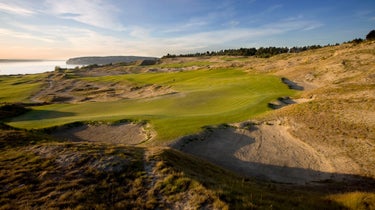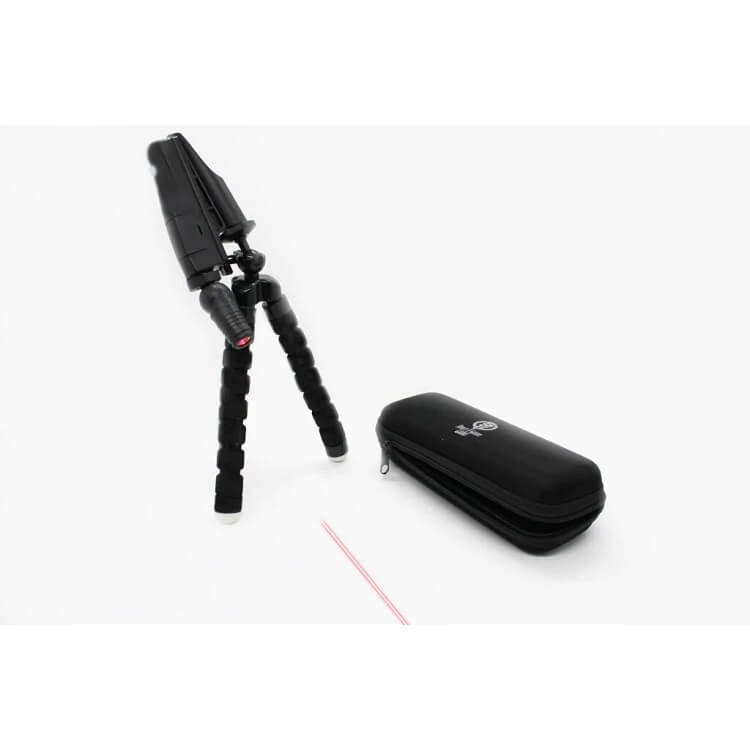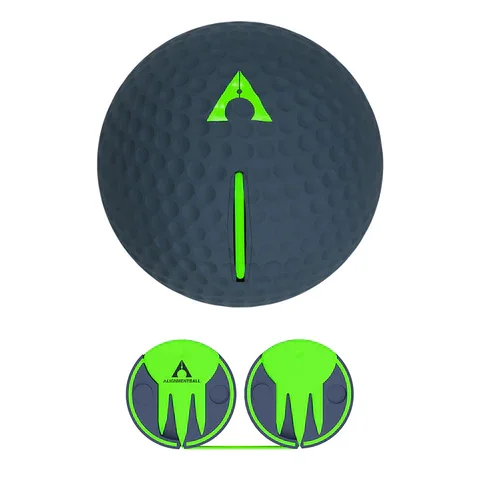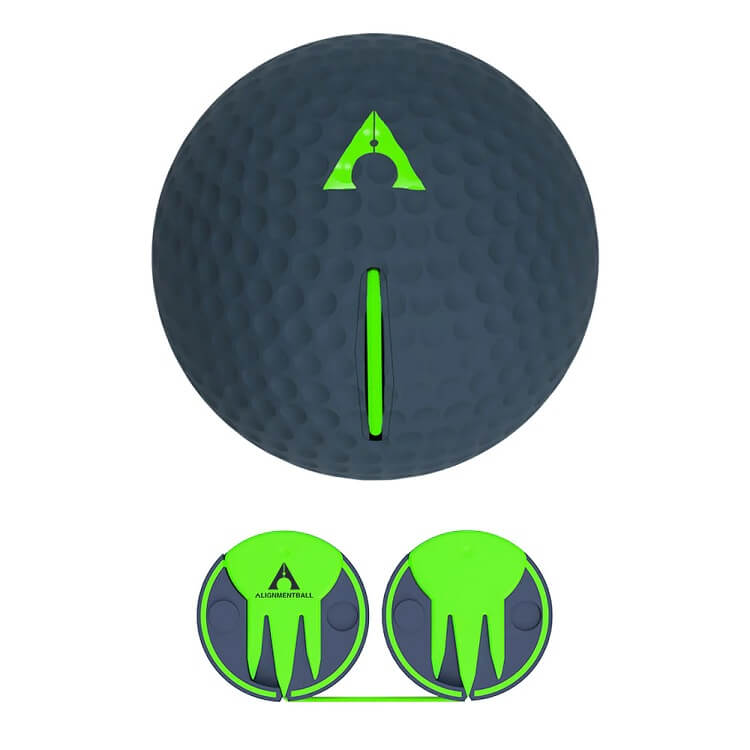
Chambers Bay played host to the 2015 U.S. Open, which crowned Jordan Spieth as champion.
Instagram / @ndimengo
Welcome to the debut of Shaving Strokes, a new GOLF.com series in which we’re sharing improvements, learnings and takeaways from amateur golfers just like you — including some of the speed bumps and challenges they faced along the way.
There’s a certain feeling you get when you arrive at a brand-name golf course, and Chambers Bay — host of the 2015 U.S. Open — certainly conjures that sensation.
While I’ve yet to visit Augusta National, St. Andrews or Pebble Beach, I’d imagine any player about to play those courses feels a mix of excitement and anxiety. And that cocktail of emotions is something that many players struggle to block out — especially a 13-handicap like myself.
During my recent trip to Chambers Bay, I felt it.
The moment I turned into the parking lot and spotted the clubhouse, the adrenaline began to rush. There were stunning views of the Puget Sound, off which a slight, warm breeze blew.

Image via Chambers Bay
Goosebumps followed, as did the emotions, especially upon entering the clubhouse — which have the words Chambers Bay, 2015 U.S. Open emblazoned by the entrance.
It all just got very real.
As I chatted with the starter, Chris, I nervously asked what tips he had for my buddy and I, both Chambers Bay first-timers.
“Well, boys, the course can eat you up, but it’s also got some forgiveness to it,” he told us. “So you’ll absolutely want to avoid certain areas on different holes, but mishits on this course can actually turn out to be OK.”
Chris wasn’t wrong: Chambers Bay is the ultimate test for course-management junkies.
Since Chambers has long steep hills, players can use the terrain to their advantage. Slicing a shot here may look ugly on camera, but if the ball hits the slope in the right way and the ground is firm enough — which it was on the day we played — it can trickle down into fairways and onto greens.
Of course, Chambers Bay can also chew up a shot, which happened to me on No. 3 when I used an 8-iron from 145 yards out.
I had a clean strike that landed about two feet from the front-right of the green. On most courses, that ball sticks, and I’m putting for birdie from about 20 feet to the pin. At Chambers, not so much.
The ball held for a moment, then slowly trickled down…and down…and down some more, eventually rolling into a lethal bunker at which I nearly pulled a hammy just trying walking into. My local typical muni this wasn’t.
I also had asked Chris for any advice when it comes to putting, given, the greens were a source of controversy and criticism during the 2015 U.S. Open.
He didn’t mince words, saying with a laugh, “Yeah, you’re going to see a lot of elephants and dinosaurs living underneath those things today.”
In other words, You stand no chance. His assessment was spot on.
The greens at Chambers Bay are the most difficult I’ve ever played on. Unlike other courses where you in a few holes get a sense for the speed or break, at Chambers every green presented a new challenge that I had never seen before in my 26 years as a golfer.
It wasn’t that the putting surfaces were lightning quick; in fact, it was quite the opposite. They rolled nice and smoothly, but designer Robert Trent Jones Jr. clearly didn’t want to make life easy on players who just putt and pray, because there was no such thing as a straight putt at Chambers.
Multiple times during the round, my buddy and I frustratingly complained to one another, “There’s no such thing as a [bleeping] gimme here!”
It wasn’t until about hole No. 6 when we just had to laugh it off and accept the fact that two-putts were a win, and three-putting was the norm.
I required 42 putts. Forty-two!
Fortunately, the stunning views and picturesque landscape belie the difficulty of the course. It didn’t feel real out there — fantasyland stuff — which made it easy to ignore the fact that I was playing like crap.
Just being in that moment, surrounded by those memories from the U.S. Open — man, what a positive distraction.
But that’s part of what makes Chambers so different — it’ll wear you down mentally, physically and emotionally, but you don’t realize it’s happening until you’re shooting 20 over and struggling to ascend one of the mountainous fairways.
It truly feels like you’re taking in an ocean-view hike with a set of golf clubs on your back. It’s exhilarating. Exhausting. Emotional. Dehydrating. And anything but easy.
Chambers Bay got the best of me, but it also made me a better player.
As I start my journey to break 80 for the first time by the end of summer (fingers crossed), what Chambers gave me was self-belief.
Sure, the scorecard wasn’t pretty — I shot a 97, my worst round in about four years — but the course tested my will. It made me use every club in my bag. It made me stay (mostly!) calm under pressure. It didn’t allow me to crack when things weren’t going the way I envisioned.
Chambers was the toughest test I’ve ever experienced as a golfer. And while I’m upset with my overall score, I can’t be mad about improving in many areas of my game.
Despite narrow driving zones and intimidating bunkers lining every hole, I hit 12 fairways.
Despite it’s length — the course measures nearly 6,600 yards from the “Sand” tees — I gave myself plenty of par and even a few birdie opportunities.
Rather than relying heavily on my hybrid to play long fairway shots, I leaned on my fairway woods, which have often gathered dust from lack of use.
On the three occasions I was in the sand, I recovered nicely.
My approach shots were strong. My chips were high and soft.
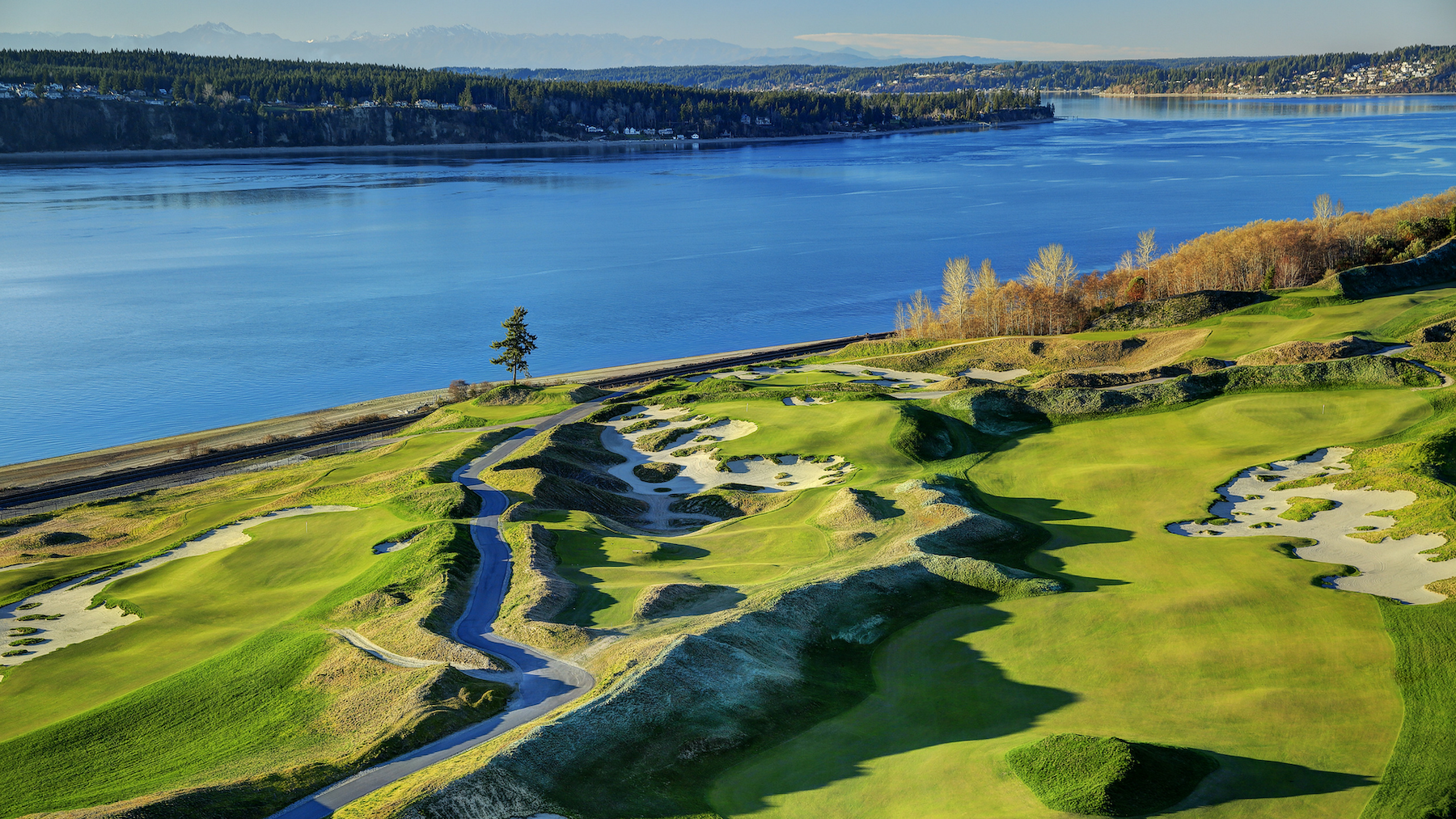
Image via Chambers Bay Golf
On the first tee, I striped a 240-yard drive down the right side of the fairway. It sat about 135 yards from the middle of the green.
Pulling out my 8-iron, I stuck my shot about 25-feet behind the pin, giving myself a birdie putt.
Oh, I’m breaking 85 today, I thought. What’s all the hype about? This is going to be easy.
Three putts later, I had carded a bogey. Chambers Bay had flashed its teeth, the first sign that it was going to eat me alive.
I’ll be back, though, ready to take that test again in my quest to shave strokes off my game.
Come join me — and so many others! It’s going to be fun, exhilarating and informative ride.
All of our market picks are independently selected and curated by the editorial team.
If you buy a linked product,
GOLF.COM may earn a fee. Pricing may vary.
Short Game Gains Precision Putting Laser
$39.99
The Precision Putting Laser goes on top of your weapon (the putter) and shows you EXACTLY how to perfect your aim, so you can feel more confident pulling that trigger.
Alignment Ball
$39.99
The Alignment Ball will help you work on start line easily and quickly on the putting green. Built in spokes make setup easy and efficient. Either straight putts or breaking putts, this retractable string can do it all!



